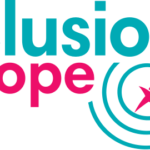RUSSELS- 3 December 2014
Improving the world through passion and innovation might seem like a cliché, but it is exactly what partners in the Able to Include project are aiming to achieve.
The United Nations Convention on the Rights of Persons with Disabilities deems disability as resulting from the interaction between persons with impairments and attitudinal and environmental barriers which hinder their full and effective participation in society on an equal basis with others. While technology could improve the lives of people with disabilities in multiple ways, such as easing their access into employment or aiding them in keeping contact with friends or loved ones, the software created for mass usage is simply not accessible for many people with intellectual or developmental disabilities.
Therefore, to break down some of these barriers to enjoying full access to the information society, and to promote the social inclusion of people with intellectual and developmental disabilities, the Able to Include project is creating an open-source and context-aware accessibility layer. Integrated with existing and future ICT tools, particularly in mobile applications, the accessibility layer will help people with intellectual disabilities to better interact with the information software.
This is truly ground-breaking. The three key technological tools partners are developing – a text and content simplifier, a pictogram-text, text-pictogram and pictogram-pictogram translation tool, as well as text-to-speech functionalities – will decode information, making regular written language accessible for people with intellectual disabilities. At the same time, they will help the wider public to better communicate with people with intellectual disabilities, by deciphering information written in pictographic languages. Able to Include will also produce an open source Software Developer Kit that will promote the introduction of the accessibility layer in any software application and development environment.
Therefore, on the European Day of People with Disabilities, Inclusion Europe and its partners in the Able to Include project are looking to the future with hope. “People with intellectual and developmental disabilities are equal members of society and should be treated as such. They should have the same opportunities as everyone else to access the information society, and should be supported in doing so,” said Inclusion Europe Director Geert Freyhoff. “Technology can improve the lives of people with intellectual disabilities, and the accessibility layer can help in achieving that,” he added.
It is paramount for software developers to create accessible applications that people with intellectual disabilities can also use, an approach which is not only morally responsible, but makes sense from an economic point of view. As technology is a cost-effective way to complement support services, people with intellectual disabilities should not be forgotten in the creation and implementation of new tools.
For more information, please contact Silvana Enculescu, Inclusion Europe Communications Manager, at s.enculescu@inclusion-europe.org
The ABLE-TO-INCLUDE project has received funding from the European Union’s ICT Policy Support Programme as part of the Competitiveness and Innovation Framework Programme under Grant Agreement No. 621055





